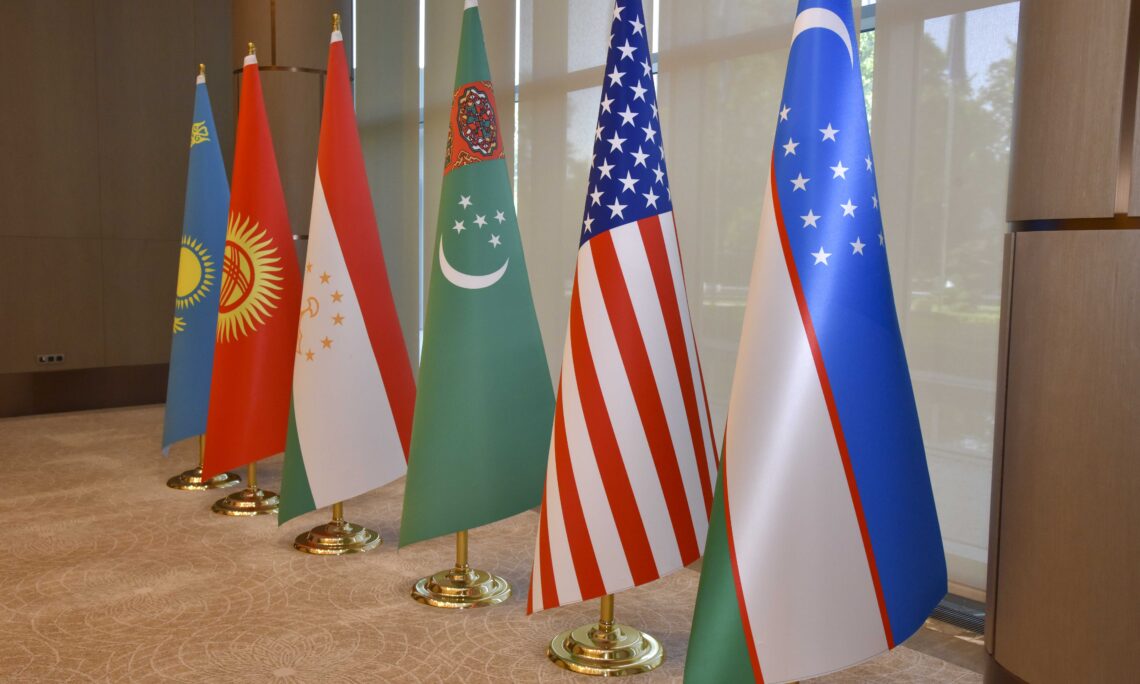BAKU, Azerbaijan, November 5. Ahead of the upcoming C5+1 Summit, U.S. experts emphasize economic diversification, sustainable growth, and regional integration as key priorities for cooperation with Central Asian countries. The summit is expected to highlight opportunities for trade, infrastructure development, and private-sector-led growth, alongside strategic engagement in critical minerals and renewable energy.
“From the U.S. perspective the priorities include helping Central Asian states deepen economic diversification and enhance resilience by linking them more fully into global value chains rather than simply serving as raw-material exporters,” Jennifer Brick Murtazashvili, Professor and Founding Director of the Center for Governance and Markets at the University of Pittsburgh, told Trend.
She noted that key areas of focus will be trade facilitation and transit connectivity, investment in infrastructure, digital networks and logistics, and private-sector-led growth rather than purely state-to-state deals.
A rapidly growing area of interest is critical minerals and rare earths, which the U.S. sees as essential for high-tech, clean-energy, defense, and battery-manufacturing industries. Sustainability, green growth, and improved governance are also expected to play a prominent role.
Murtazashvili explained how the U.S. envisions cooperation within the C5+1 framework in sectors like energy, trade, and infrastructure.
“In energy the U.S. sees opportunities in supporting renewables—solar, wind, and hydro—modernizing grids, enabling cross-border electricity trade, and reducing system vulnerabilities. In trade and infrastructure, it is interested in strengthening transit corridors across Central Asia, upgrading ports, rail and logistics nodes, and improving customs and regulatory frameworks,” she said.
She emphasized that critical minerals and rare earths represent a newer but rapidly rising strand of cooperation.
“The U.S. aims to engage Central Asian countries not only as raw-material suppliers but also as nodes in processing, refining, and possibly manufacturing value chains. U.S. tools such as finance, regulatory cooperation, and risk mitigation will be stressed, and the emphasis will be on long-term value-added and transparency rather than one-off extraction deals,” she noted.
Murtazashvili also highlighted the role of U.S. businesses in supporting regional development and integration.
“U.S. firms can bring advanced technology in clean energy, mining and processing, digital logistics, and supply-chain optimization; participate in value-chain development for critical minerals; help build regional integration through logistics hubs and transit corridors; and contribute to improved governance and environmental and social standards in large extraction or infrastructure projects,” she said.
She added that Central Asia has the resources but often lacks processing capacity and integration into global value chains. For U.S. businesses to succeed, clear policy signals, risk-mitigation tools, and local institutional capacity are essential.
Sustainable and “green” economic growth will also be one of the central themes at the summit.
“The green growth agenda will feature promoting renewable energy deployment and energy-efficiency upgrades; connecting green growth to transit and trade infrastructure so that corridors and logistics are not simply high-carbon; and ensuring that any ramp-up of rare-earth/critical-minerals production and processing is accompanied by environmental safeguards, labor and community protections, and local value-addition,” Murtazashvili said.
She also noted the benefits of the C5+1 format for strengthening economic and trade ties.
“The C5+1 format is multilateral rather than purely bilateral, enabling cross-border thinking and regional supply chains rather than isolated deals. It provides a predictable platform for engagement through working groups and follow-ups and allows the U.S. to align across multiple sectors under one umbrella,” Murtazashvili explained.
She concluded that the format particularly benefits large-scale sectors such as rare earths and transit infrastructure, allowing engagement with multiple states while supporting connectivity and regional integration.
“For the Central Asian countries, the summit delivers a visible mechanism for U.S. engagement that can attract investment, build credibility, and send signals to other global players,” Murtazashvili summed up.
To note, the Central Asian region possesses a significant proportion of global reserves in various critical minerals: 38.6 percent of manganese ore, 30.1 percent of chromium, 20 percent of lead, 12.6 percent of zinc, 8.7 percent of titanium, 5.8 percent of aluminum, 5.3 percent each of copper and cobalt, and 5.2 percent of molybdenum. These materials are essential for a wide array of sustainable energy technologies, including solar panels, wind turbines, and battery storage systems. Significantly, Central Asian nations currently position themselves within the top 20 global producers of numerous vital resources.
Stay up-to-date with more news on Trend News Agency's WhatsApp channel







